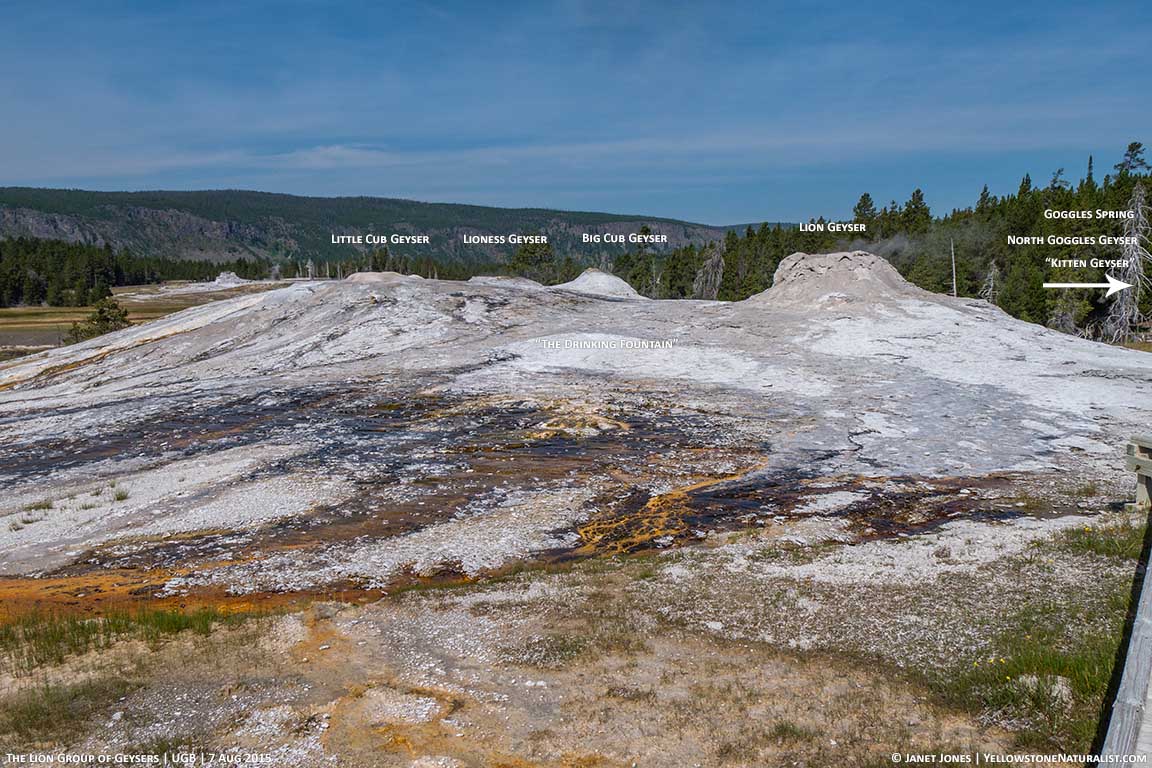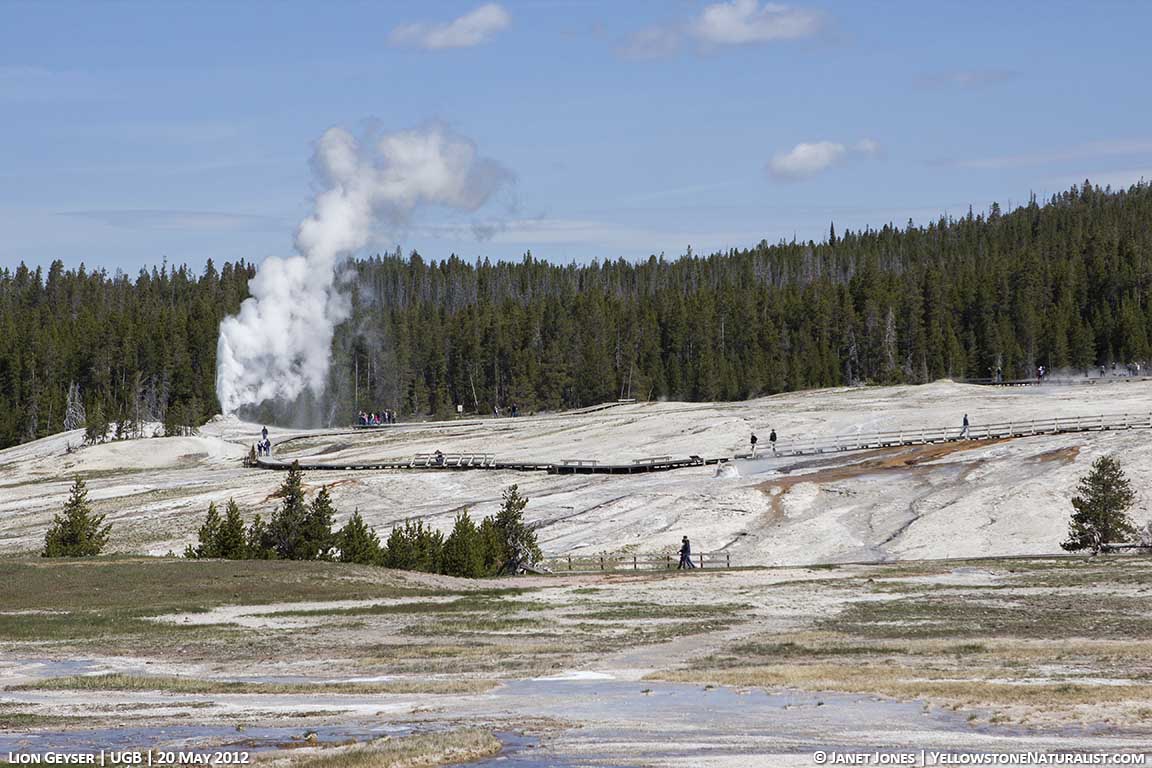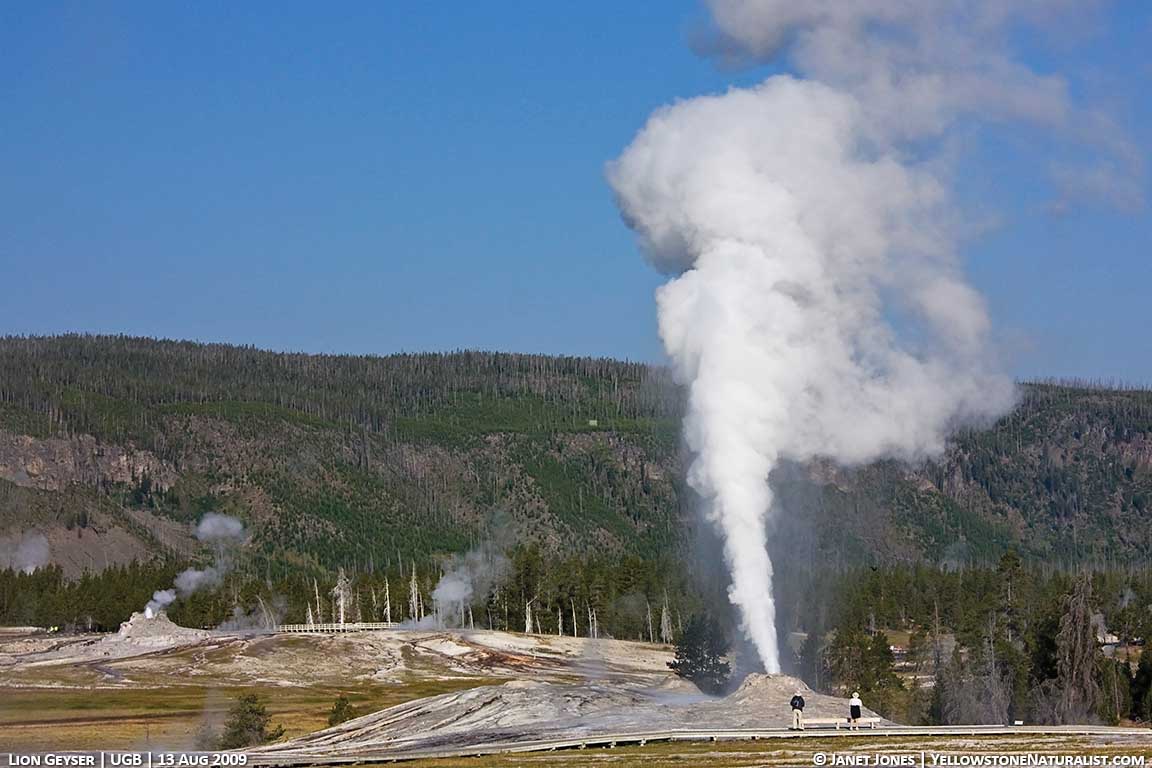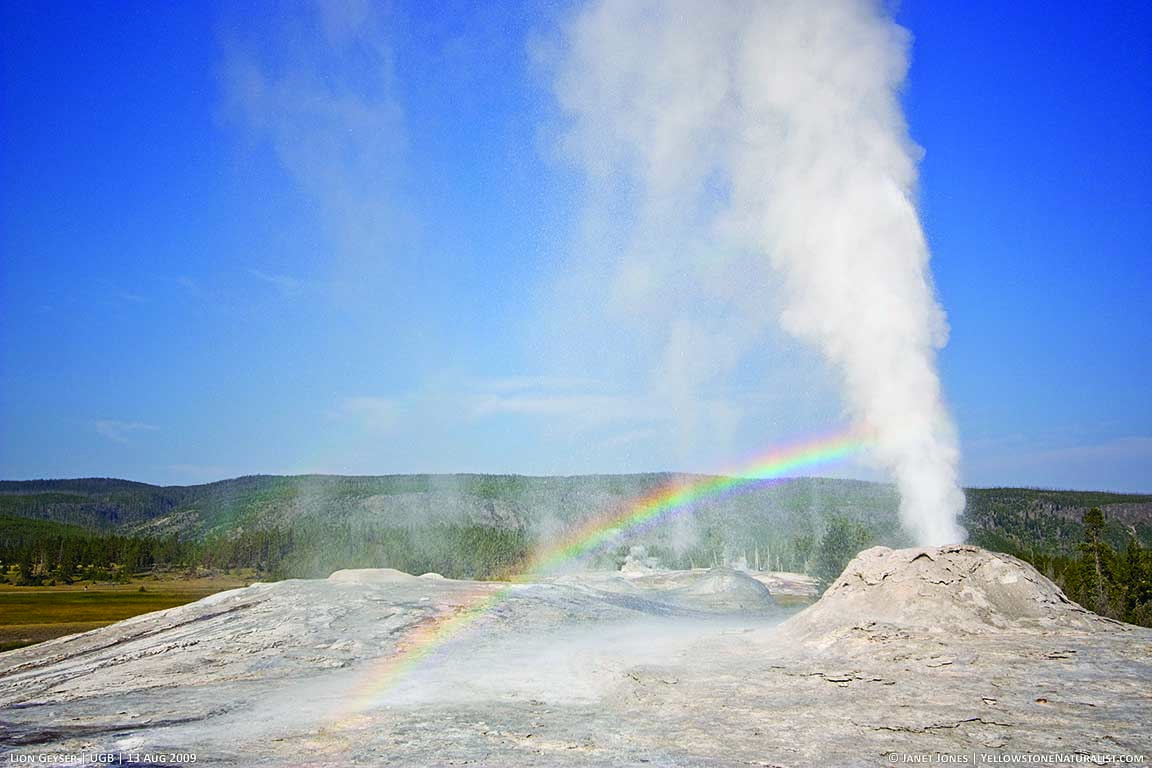Get to know Lion Geyser
In this post, we’ll take a look at another geyser on Geyser Hill: Lion Geyser.
BASICS
• Erupts in a series of eruptions followed by a pause of many hours.
• Eruptions are 50-70 feet high and last 4-5 minutes
• Is not predicted, but if it is in a series, it’s fairly easy to catch an eruption
WHERE IT’S LOCATED
Lion Geyser is located along the lower boardwalk on Geyser Hill, not far from Old Faithful and a short way from Beehive Geyser. It’s the largest cone on the platform of the Lion Group. You can remember the order of the geysers on the platform if you just remember that parents often have to sit between the children.
To reach Lion Geyser, walk around Old Faithful until you reach the path that leads down to the Firehole River. When reaching Geyser Hill, take the lower boardwalk around to the opposite side of Geyser Hill. From Castle Geyser, or the Grand area, follow the boardwalk through the woods over to Geyser Hill. Where that boardwalk connects to the Geyser Hill loop, take the path to the lower portion of the loop (a right).
ABOUT LION GEYSER AND ITS ERUPTIONS
Lion Geyser erupts in a series. This means there are many eruptions over the course of a few hours, and then a pause while the system recharges. The series can contain anywhere from one eruption to nine or more, but often there are three to five eruptions before a pause. As the system recharges, and before the first eruption in the series, the “Drinking Fountain” (an unofficial name) will bubble. This indicates there’s enough water in the system, but does not let us know how long until the first eruption. This little bubbler can be found in the bacteria mat on the platform by following the water back up to the source.
The first eruption in the series is a bit taller than the rest and lasts about a minute longer (including the steam phase). Because it uses up more energy, the time until the next eruption is about an hour and a half. Any following eruptions will be spaced about an hour apart. Before the follow up eruptions, Lion will “roar” with a gush of rushing air in the vent. The eruption usually follows within a few minutes. However, at the end of a series, Lion can also roar, but no follow up eruption occurs.
A long series of eruptions can indicate a chance for North Goggles Geyser to erupt. If there are bubbles rising in its vent, then this is a possibility.
CONNECTIONS
Lion Geyser is connected to many other springs in the area, and surprisingly, no connection has been established to exist between Lion and its close and active neighbor, Little Cub. That said, the entire Lion Group consists of all four cones on the platform, as well as both Goggle Spring and North Goggles Geyser. “Kitten Geyser” across the boardwalk is also in the Lion Group and is said to splash a foot or so prior to the initial eruption of Lion Geyser. However, people are often distracted too much by Lion to watch for this.
Unusual activity in late 2018 on Geyser Hill showed that there is likely a connection to Ear Spring, Pendant Spring and others farther up the hill. During this unusual activity, Lion Geyser had a short dormancy while North Goggles Geyser had an amazing number of eruptions. After the unusual activity subsided, Lion returned to the behavior seen prior to the anomaly.
HOW ERUPTIONS HAVE CHANGED OVER TIME
While at the writing of this article, Lion Geyser has a pause of about 11-12 hours between series, which is fairly often. This has not always been the case in the past. Lion has shown periods of waxing and waning over the years.
In 1938, Park Naturalist, George Marler, observed about two active phases (series) a couple of times a week that lasted 48 to 60 hours. The time between eruptions lengthened through the series from 30 minutes to up to 150 minutes. In 1955, it was seen only once a week, sometimes with eruptions three hours apart. By 1958, active phases were seldom seen From 1964 to 1969 he reported 7 to 9 days between active phases.
Knowing this can help us to appreciate the regularity that we currently enjoy from this geyser.
IN CONCLUSION
While Lion Geyser isn’t among the handful of predicted geysers, once an initial eruption in a series of eruptions has occurred, then catching follow up eruptions becomes quite easy. If there’s a second eruption, it will happen about an hour and a half later, and any following eruptions will be about an hour apart.




